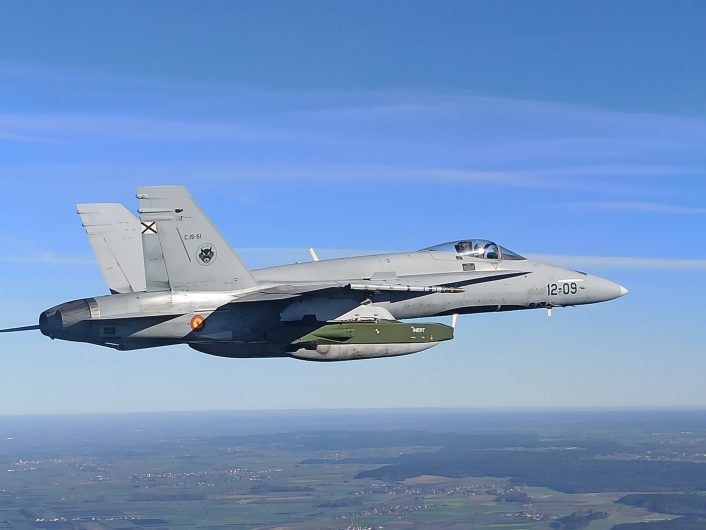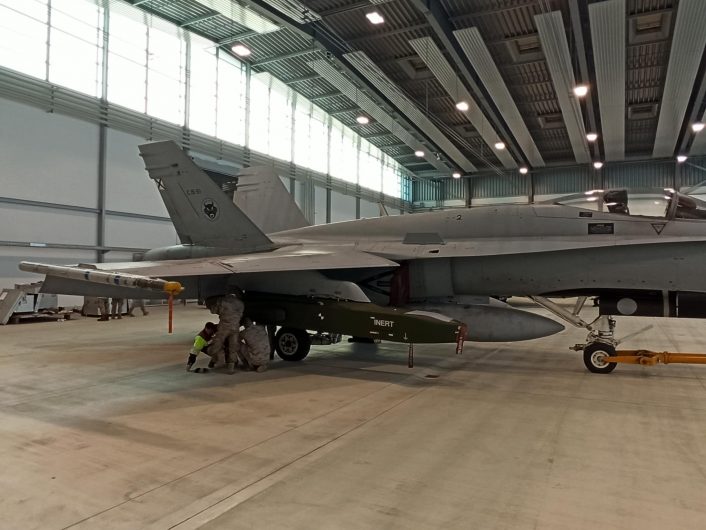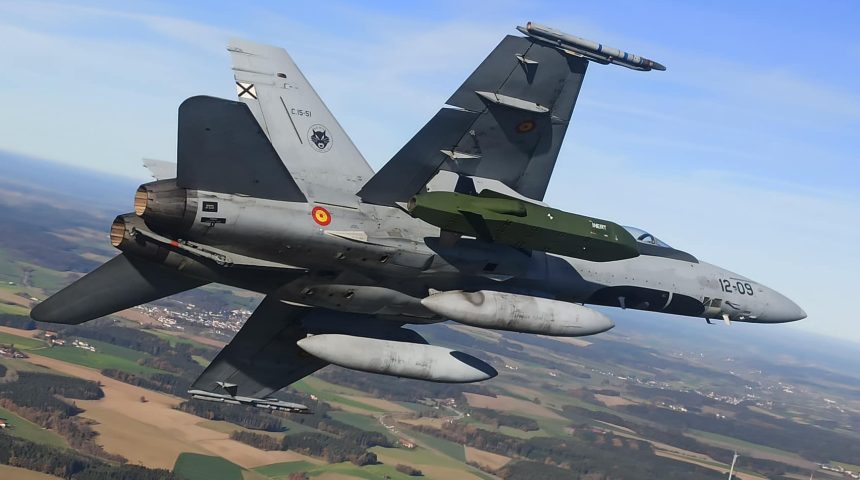Spanish Air Force EF-18 Hornets are involved in the recertification after the MLU (Mid-Life Upgrade) of the Taurus 350 missile.
Three EF-18M Hornet (C.15 in accordance with the local designation) jets and a team of 19 military from the Centro Logístico de Armamento y Experimentación (Weapons and Experimentation Logistics Center) of the Ejército del Aire (Spanish Air Force) deployed to Manching, Germany, last week, to carry out a testing campaign to re-certify the Taurus long-range missile after its modernization.
Taurus KEPD 350 is a German/Swedish ALCM (Air Launched Cruise Missile) that is manufactured by Taurus Systems GmbH, a partnership between MBDA Germany and Saab Dynamics. The missile has a range of +500 kilometres (300 mi), a speed of Mach 0.8-0.9 and stealth features. It is optimized for attacking deep buried bunkers and infrastructure even in anti-access and area denied environments. For this reason, the weapon, that has been in the inventory of the Spanish Air Force for 12 years, is considered to be of strategic and tactical relevance for the Spanish armed forces.
The Taurus has recently been modernized as part of an MLU program (signed in 2018) that has introduced an updated missile software, newer Image Processing Computer (IPC) software and navigation algorithms, and has also integrated a new GPS antenna as well as an enhanced capacity GPS receiver vs. disturbance.

Two EF-18M of the Ala 12 will be involved in the testing: one, carrying the missile, the second (a two-seater) acting as chase, while the third jet will be used as a reserve, in case of failures grounding one of the Hornets.
El #CLAEX ha desplegado 3 #F18M en la #BAManching para comenzar los vuelos de recualificación del misil #TAURUS, tras el proceso de modernización de este sistema de armas. El despliegue se ha llevado a cabo con apoyo del #Ala12, #Ala15, #Ala35 y #47grupo. #SomoselAire @Defensagob pic.twitter.com/4LmwYbrTTG
— Ejército del Aire (@EjercitoAire) November 15, 2020
According to the Spanish Air Force, the campaign is primarily aimed at ensuring the correct compatibility between the aircraft and the modified missile. The testing includes ground testing of communications between the launching platform and the Taurus; crew familiarization flights with the area of local testing and procedures; and also a “captive” flight during which a simulated missile launch is carried out. Following this simulated launch, the test plane follows the trajectory and flight conditions that the missile would perform on its free flight, checking that both the image acquisition system and the new navigation algorithms are working properly and as expected.










